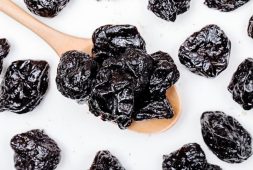Italian Researchers Create Mosquito Repellent Better, Safer And Better Smelling Than DEET

The debate around mosquito repellants and DEET has been going on for years, and throughout years of study and research, when it comes to repelling insects, DEET has long since been touted as the best defense when it comes to keeping people mosquito-bite free. However, many claim that DEET is actually bad for you, especially for kids, which is why many parents have been on the lookout for better and safer alternatives for their kids.
These days, some companies are using a combination of plant compounds that have proven to be more effective and less irritative than the more popular alternatives, such as DEET and another, picaridan.
However, when used on their own, DEET and picaridan – which is the second most used type of mosquito repellant – cannot provide all the needs to be the best kind. Usually people want particular effects, such as a high degree of protection against bites at a low dose of usage, a small or inconsequential – if not no – degree of toxicity or immuno-sensitivity, minor or no odor if possible, all with the ability to provide continuous protection against bites, even when they get wet.
A group of Italian scientists, led by Francesca Dani from the University of Firenze, began to research using a group of terpenoids, which happens to be the second-biggest family of plant metabolites. These compounds provide many kinds of plants their original and unique health benefits, as well as their fragrances.
The authors wrote, “Since most naturally occurring terpenoids endowed with an insect repellent activity show a short protection time against hematophagous insects, mainly because of their volatility, we hypothesized that derivatives of two well-known terpenoid repellents, menthone and citronellal, with lower volatility would have a longer protection time.”
Notably, all the formulas they made were tested against the Asian tiger mosquito A. albopictus. This happens to be prevalent within the United States, while spreading encephalitis, dog heartworm, and dengue fever, which can be fatal at times.
The research also showed that by converting the terpenoids compounds into groups of cyclic acetals and hydroxyacetals, the researchers managed to create a repellant that was actually just as effective as DEET, without the strong odor or short span of protection. Moreover, their terpenoid-based repellant managed to last for 8 full hours, which is 6 hours more than the usual DEET-based repellants.
Meanwhile, the picardian also lasted around 8 hours, but there are times when it causes immune reactions when applied onto the skin directly. The two hyroxyacetals that were used also showed that they would be less likely to cause immune reactions, nor could they penetrate the cell layers than picardian.
In addition, the team also discovered that their cyclic acetals and hydroxyacetals could be created from a variety of carbonyls, which is a family of organic compounds. This includes carboxylic acid, which is the base component of a number of different food and health products such as milk fat, coconut oils, palm and kernel oil, vinegar, valerian herbs, chocolate, nutmeg and citric acid, which means that the cost to produce an insect repellant like this shouldn’t be too costly since it’s found in a number of normal household products.



